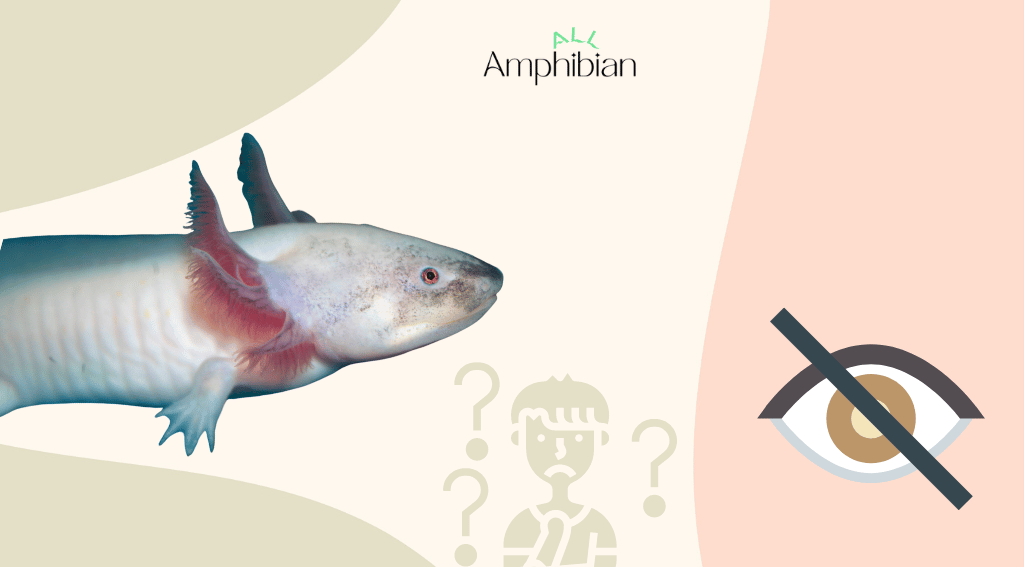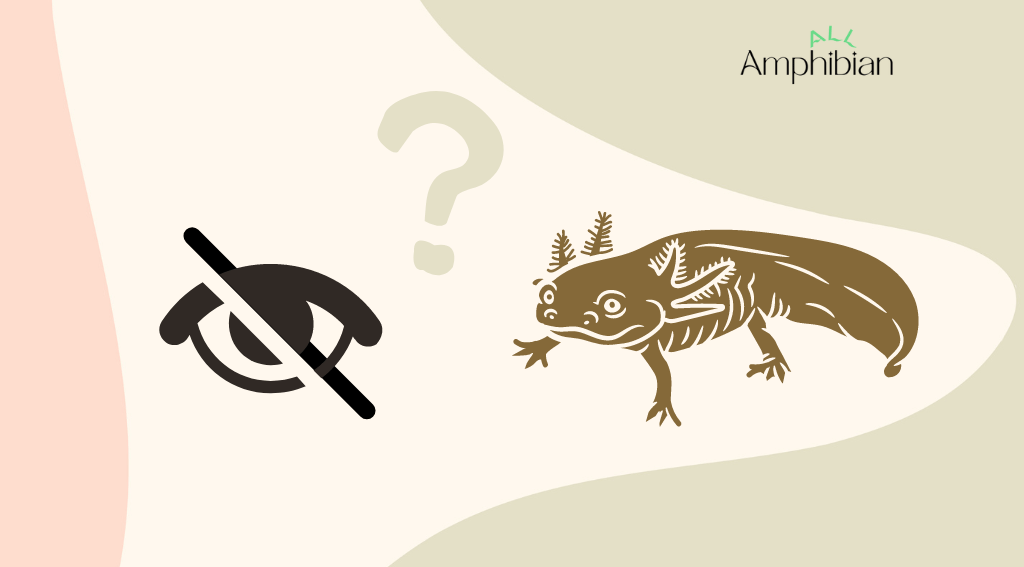The axolotl is a salamander that exhibits neoteny, which means it retains its larval features throughout its life without undergoing metamorphosis. This amphibian species shares the same genus as the tiger salamander and inhabits aquatic environments while possessing external gills. The species in question originates in Mexico and faces a significant threat of extinction due to habitat degradation and environmental pollution.
their organs can regenerate appendages and specific regions of its ocular and cerebral tissues. The object exhibits a diverse range of hues, including but not limited to black, gray, gold, and white.

Overview of axolotls’ physical characteristics
Axolotls possess a relatively sizable caudal appendage resembling that of a tadpole and diminutive webbed extremities. The creature has a broad, flat head with three sets of thin respiratory organs on each side.
The maximum length and weight of the subject in question are 12 inches (30 cm) and 8 ounces (225 g), respectively.
These organisms possess a unique characteristic known as neoteny, wherein they retain their juvenile traits throughout their lifespan. Unlike other salamanders, they do not experience metamorphosis. The entities in question exhibit a range of hues, including but not limited to deep brown, grey, ebony, golden, or ivory.
These organisms can regenerate their limbs and particular portions of their ocular and cerebral structures.
Are Axolotls Blind?
Although axolotls are not entirely blind, their visual acuity is limited. The visual perception of the subject is limited to detecting light and motion without the ability to discern hues or intricate features. The organism in question possesses diminutive, circular ocular organs atop its skull. Yet, it lacks the presence of movable folds of skin that serve as protective coverings for the eyes.
They exhibit photophobia and exhibit a preference for low-light environments. They depend on alternative sensory modalities, such as olfaction and tactile perception, to facilitate their locomotion, foraging, and predator evasion.
Example of axolotls’ vision capabilities

Axolotls can perceive light and motion within their dim and turbid environment, as evidenced by their visual capabilities. The optical system of these organisms enables them to perceive both potential prey and predators, in addition to regulating their circadian rhythm.
Nonetheless, their ability to perceive colors and details is limited. The absence of eyelids in these organisms causes difficulty in visual perception under high illumination conditions. Animals depend on alternative sensory modalities, such as olfaction and tactile perception, to facilitate foraging behavior and mitigate potential threats.
The anatomical structure of axolotls’ eyes
Axolotls possess small, circular ocular organs situated laterally on their skull. The visual organs of the subject include two distinct cellular structures, namely rod cells and cone cells. Rod cells facilitate vision in dimly lit environments, whereas cone cells enable the perception of colors and finer visual features.
Nonetheless, their cone cells’ development is limited, impeding their ability to perceive colors and details precisely. Additionally, the absence of eyelids renders them susceptible to photophobia. These animals possess a protective layer of skin that envelops their eyes, safeguarding them against external agents such as dirt and debris.

Other senses axolotls rely on
Axolotls depend on non-visual senses to aid their survival in their natural environment. These organisms possess olfactory abilities that enable them to perceive potential food sources and reproductive partners.
- These organisms possess a sensory system known as the lateral line organ, which is situated along their body and is responsible for detecting water pressure and vibrations. This aids in the identification of potential prey and the evasion of predators. Axolotls possess a tactile sense that facilitates their ability to perceive their environment and engage in inter-axolotl communication.
- The olfactory sense holds significance for axolotls due to their limited visual acuity and habitat in turbid aquatic environments. These creatures possess nostrils on the cranial region that enable them to perceive gaseous and aqueous substances olfactorily. Axolotls can detect chemical signals emitted by other individuals of their species, including pheromones that convey information about their sexual identity and reproductive condition. In addition, olfactory perception enables them to detect various types of sustenance, including but not limited to annelids, arthropods, piscine organisms, and decapod crustaceans.
- The lateral line organ is a sensory system comprising specialized cells capable of detecting water pressure and motion alterations. The organism consists of a sequence of apertures and ducts that traverse the body’s lateral surfaces and cranium. The lateral line organ facilitates the axolotl’s ability to detect the presence and direction of prey and predators and the flow of water currents. Additionally, it aids individuals in establishing their spatial position and sustaining equilibrium. The lateral line organ exhibits similarities to the organ in fish and certain amphibian species.
- The tactile sense is an additional means for axolotls to investigate their surroundings and engage in social behavior. The organism in question possesses cutaneous receptors that enable the perception of thermal, nociceptive, and tactile stimuli. In addition, these organisms include sensory cells located on their gills that aid in detecting water quality and oxygen concentrations. Axolotls employ tactile communication methods, such as nipping, nudging, or rubbing, to interact with one another. Also, these organisms use tactile input to groom themselves and eliminate ectoparasites on their skin and branchial surfaces.
Conclusion
Touch is a significant aspect of the daily existence of numerous animals, serving various purposes such as communication, grooming, and hygiene. The sense in question is crucial for individuals to navigate their surroundings and engage in social interactions effectively.

FAQ
Is the visual ability of axolotls impaired?
Axolotls do not suffer from blindness. Their visual perception is limited to light and motion, with a reduced ability to discern colors or intricate details. Their visual acuity is comparatively lower than that of humans and other members of the animal kingdom.
Is it possible for axolotls to perform the act of blinking?
Axolotls cannot blink. Due to the absence of eyelids, they exhibit sensitivity to bright light. These animals possess a protective layer of skin that envelops their eyes, shielding them from external contaminants such as dirt and debris.
Is it possible for axolotls to perceive their caretaker?
Axolotls are capable of perceiving their owner, albeit with limited clarity. The animals possess the ability to identify the physical form and motion of their proprietor, albeit lacking the capability to discern their countenance or emotional demeanor. The animals can establish an association between their caretaker and sustenance, exhibiting surfacing behavior upon sighting their owner.
Is it the case that axolotls cannot perceive color?
Axolotls do not suffer from color blindness. While they can differentiate colors, the color spectrum is restricted, limiting their capacity to identify colors to a certain extent. The ocular structure of the subject comprises two distinct cellular entities, namely rod cells and cone cells. Rod cells facilitate vision in dimly lit environments, whereas cone cells enable the perception of colors and finer visual particulars. Nonetheless, their cone cells exhibit limited development, impeding their ability to perceive colors or intricate details precisely.
Do albino axolotls experience blindness?
Albino axolotls do not exhibit blindness. While possessing similar eyesight to their counterparts, these axolotls may demonstrate low visual understanding compared to other species members. This is due to the absence of pigmentation in their ocular structures, rendering them more susceptible to photic stimulation and ocular injury. Individuals may exhibit red eyes, potentially leading to visual impairment in bright environments.
Is it possible for axolotls to regenerate their eyes?
Axolotls are capable of regenerating their eyes. These organisms possess the capability of regenerating appendages, as well as portions of their ocular and cerebral tissues. The possession of this characteristic by vertebrates is infrequent, rendering them significant subjects for scientific investigation. Nevertheless, the eye regeneration process is a complex and time-consuming endeavor that may span several months or even years. The regenerated ocular organ may exhibit functional limitations and potential irregularities compared to its native counterpart.
What is the hue of the iris of axolotls?
Axolotls’ ocular pigmentation can vary depending on their skin color and pigmentation. The color variations of the subject in question may include black, brown, gray, gold, or white. The absence of pigmentation in the eyes of albino axolotls may result in the manifestation of red eyes. Certain axolotls may exhibit heterochromia, characterized by two distinct eye colors.

